Last updated: January 6, 2020
Article
Exploring the Woods under the Water: Dr. Bradley Peterson examines the resilience of Great South Bay ecologies after Hurricane Sandy
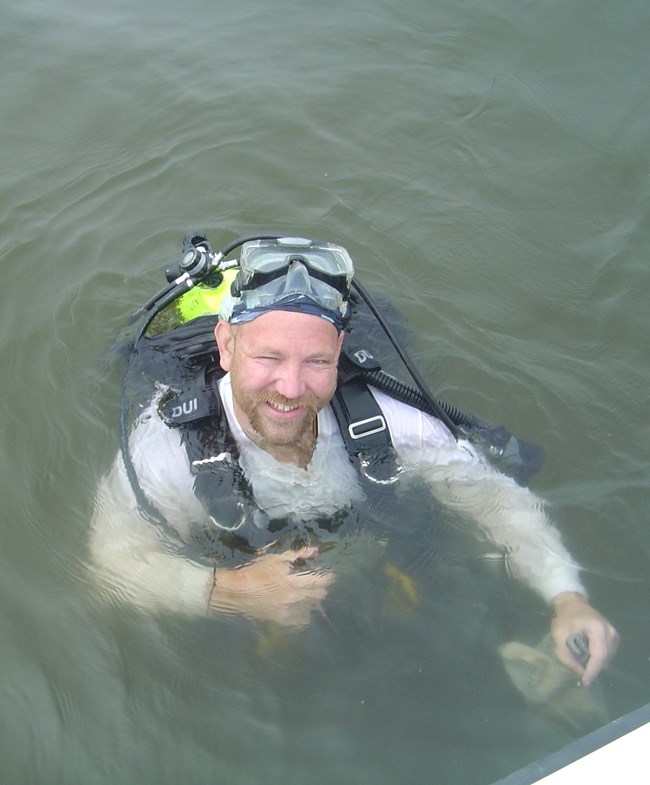
NPS
In the story of Dr. Bradley Peterson’s research for the National Park Service (NPS), the natural history of Great South Bay steals the show every time. Located off the south shore of Long Island, New York, Great South Bay was once the picture of vitality and abundance.
“If you were to be in Great South Bay in the early 1970s,” Dr. Peterson says, “you would be able to stand in water that was up to your chest and look down and see your feet. And at your feet, there would be seagrass growing.” This vision of Great South Bay—crystal-clear water, abundant seagrasses supporting a variety of finfish and shellfish communities—evokes a flourishing, complex ecosystem.
The Great South Bay of that era supported an impressive shellfishery. Its dominance across markets and restaurants from coast to coast belied the size of the source. Estimates indicate that at one time, in the mid-1970s, half of the hard clams consumed across the United States were harvested from this comparatively small 151-square-mile bay.
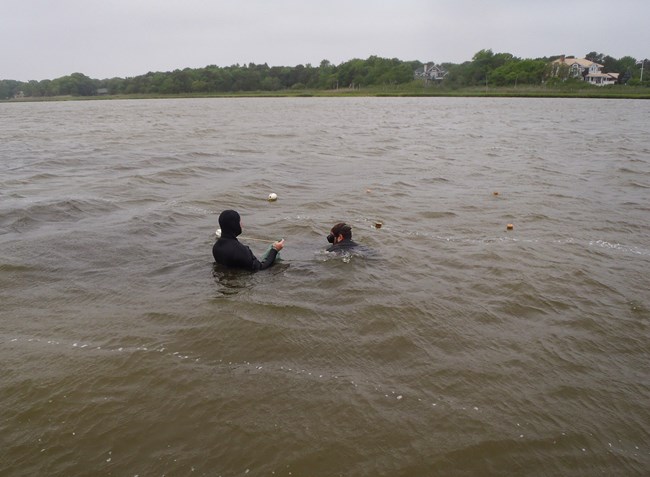
Brad Peterson
But the local shellfishery did not survive. By the mid-1980s, under pressure from overharvesting and from frequent and intense phytoplankton blooms called brown tides, which adversely affect water quality, the population of hard clams crashed. The brown tides, stimulated by contamination from septic systems and fertilizer runoff from heavily developed areas on the south shore of Long Island, became a regular occurrence in Great South Bay. They stripped the bay of its once-lush seagrass beds, the same ones that had provided essential finfish and shellfish habitat.
These changes fundamentally altered the ecology of the bay. Prior to the demise of the hard clam population, Dr. Peterson says, “it took about four days for the entire volume of Great South Bay to go through the gut of a hard clam.” That is, hard clams were so abundant in the bay that, collectively, the entire population could rapidly filter a massive amount of water. Hard clams consume phytoplankton, bacteria, and other particles suspended in the water. Their feeding process filters water and helps maintain water quality, which benefits other organisms in the bay. But the population of hard clams in Great South Bay was no match for overharvesting and brown tides, and so, for close to thirty years, the bay has been dense with phytoplankton blooms, the seafloor touched minimally by sunlight. The water is now what Dr. Peterson calls a “chocolate milk” color.
The brown tides are not a permanent condition, but they are persistent and difficult to manage. When the brown tides became a regular occurrence, the outlook for the revitalization of Great South Bay seemed bleak. But then Hurricane Sandy struck the coast in the fall of 2013, and perspectives on the future of Great South Bay began, gradually, to shift. Ask Dr. Peterson now about the resilience of Great South Bay, and you might hear a fresh note of optimism, one that’s backed by science.
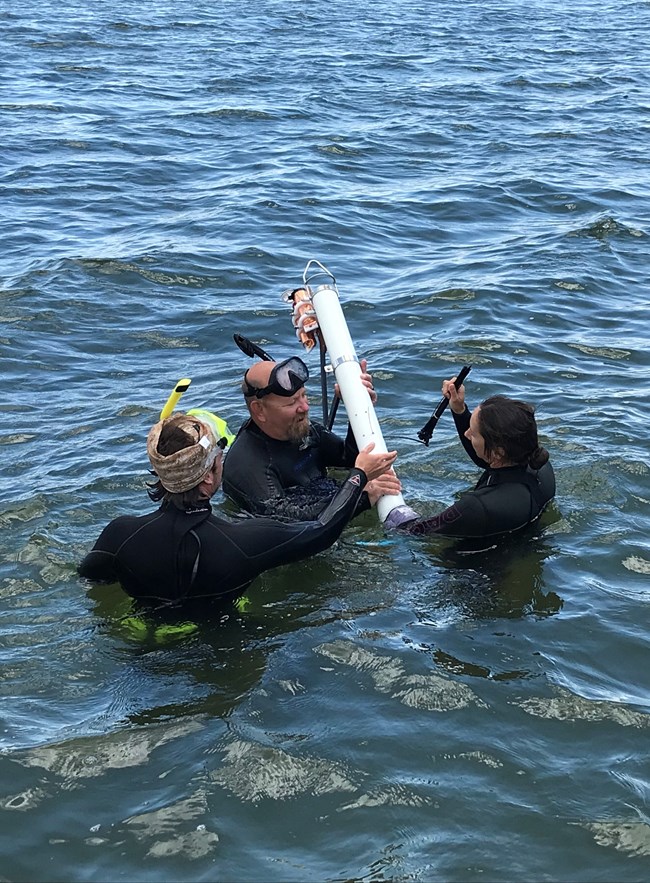
NPS
An associate professor in the School of Marine and Atmospheric Sciences at Stony Brook University, Dr. Peterson has been conducting research in Great South Bay since 2007. He monitors water quality and the vitality of seagrasses in parts of Great South Bay that fall within the boundaries of Fire Island National Seashore (FIIS). The research is part of the NPS Inventory and Monitoring (I&M) Program. Through I&M monitoring research, scientists efficiently track and assess how an ecosystem changes over time, across extensive areas, and in response to disturbances and stressors, whether pollution, storms, sea level rise, or climate change. Dr. Peterson works with the Northeast Coastal and Barrier Network (NCBN), a regionally defined I&M network that coordinates long-term studies of ecosystem “vital signs” across eight National Park sites in the region.
As with other I&M studies, Dr. Peterson’s research provides crucial information that NPS can use to make informed decisions in managing park resources. Dr. Peterson and his team of student researchers collect data on water temperature, salinity, levels of light reaching the bottom of the bay, turbidity (the density of sediment and other particles suspended in water), and levels of dissolved oxygen and chlorophyll. To monitor seagrass, they track a variety of indicators to learn where seagrasses are growing and how, recording, for instance, the size of individual plants, the percentage of area covered by seagrasses, and the density of plant mass in specific locations. By the time Hurricane Sandy struck the U.S. east coast, on October 29, 2012, Dr. Peterson had amassed water quality and seagrass data spanning six years, which includes a year’s worth of water quality data collected by scientists from the U.S. Geological Survey as part of the same I&M study.
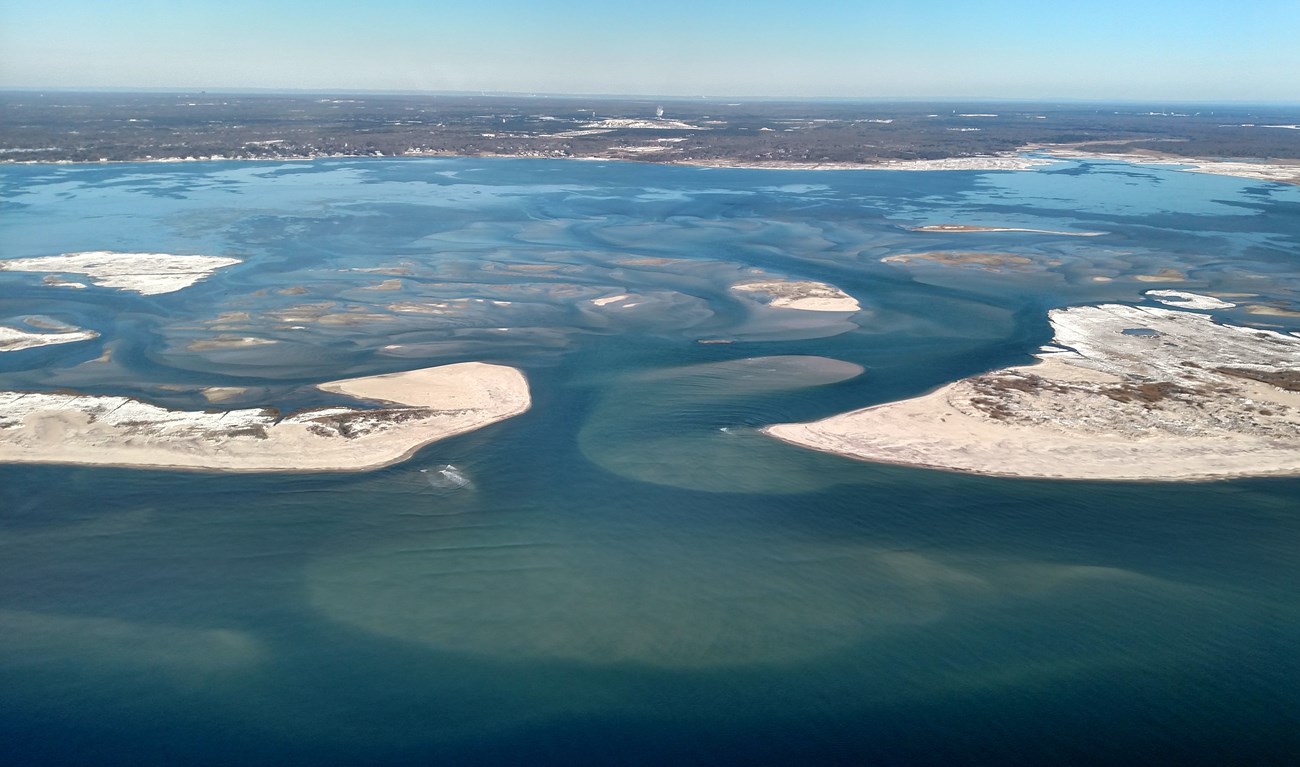
Charles Flagg
“The most common issue for estuaries, globally, is a decrease in water quality,” says Dr. Peterson, and Great South Bay is no exception. Water quality can determine whether and which seagrasses thrive. Seagrasses, in turn, deliver a reciprocal benefit; they contribute to water quality by trapping sediment on the seafloor and decreasing turbidity, thus affecting how much sunlight can penetrate to the seafloor. The abundance and variety of seagrasses in the bay also influence the vitality of hard clam and finfish populations. Together, water quality and seagrasses impact the stability of the entire broad and complex ecosystem of Great South Bay.
When Hurricane Sandy created a breach in the Otis Pike Fire Island High Dune Wilderness, allowing water to flow freely between Great South Bay and the Atlantic Ocean, Dr. Peterson understood it immediately as a game-changer for Great South Bay. “We’re going to see eelgrass populations increase,” he said to a colleague in the months following the storm. The wilderness breach brought clear ocean water into Great South Bay, flushed polluted water, and reduced water temperature in areas near the breach—all favorable conditions for eelgrass, a species of seagrass which is to the Great South Bay ecosystem, basically, what spinach is to Popeye.
Data from Dr. Peterson’s I&M research for NCBN is now being used as a baseline for analyzing data collected in a new set of NPS studies following Hurricane Sandy. The monitoring data is proving to be instrumental in revealing how the Great South Bay ecosystem has changed in response to this category 3 storm.
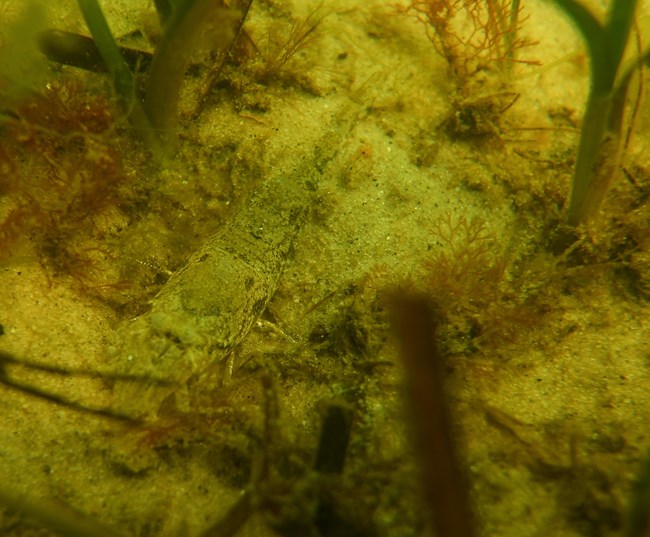
NPS
In 2013, the U.S. Department of the Interior devoted a portion of post-Hurricane Sandy storm recovery and mitigation funding to NPS resilience research that examines how Sandy affected natural resources and that explores the resilience of coastal ecosystems. Ecological resilience refers to the capacity for an ecosystem to maintain or restore stable, vital relationships between living organisms and their habitats, even in the face of disruption and change.
As the principal investigator on two of the post-Sandy resilience studies, Dr. Peterson led a team of student researchers conducting field studies in Great South Bay between 2013 and 2016. They measured changes in water quality, seagrasses, and the use of seagrass habitats by fish, shrimp, and crustaceans in Great South Bay.
Dr. Peterson is especially concerned with seagrasses and how they were affected by Hurricane Sandy. In shallow coastal ecosystems, like Great South Bay, he explains, “There’s a clear, direct link between the amount of grass we have and the amount of fish we have.” For juvenile fish and for the free-swimming fish, shrimp, and crustaceans that live on the surface sediments of the seafloor (collectively called nekton), seagrass beds provide shelter, food, and nursery grounds. By enriching the sediment with oxygen, seagrasses make the sediment on the bay floor habitable for some organisms. They also bind sediment with their roots, reducing erosion during storms and contributing to water clarity and increased light penetration on the seafloor.

NPS
Dr. Peterson’s post-Sandy resilience studies focus on two species of seagrass: Ruppia maritima, commonly known as widgeongrass, and Zostera marina, or eelgrass. Dr. Peterson calls eelgrass “the woods under the water” because it grows to be five to ten times taller than widgeongrass. Animals prefer eelgrass because it is more structurally complex, Dr. Peterson explains, and so, eelgrass supports marine life in great abundance and variety. In other words, it contributes significantly to biodiversity, a critical condition for maintaining ecosystem stability, which, in turn, benefits human enterprises that are dependent upon stable ecosystems, such as commercial fishing.
Prior to the formation of the wilderness breach, shorter widgeongrass had dominated in many areas along the perimeter of the Fire Island where warm, shallow waters thwarted the growth of eelgrass. The breach caused water temperatures to plummet and salinity to skyrocket in parts of the bay near the breach, presenting an opportunity for eelgrass to grow again. In August of 2016, Dr. Peterson reported some preliminary results from his field study. Eelgrass had responded to the breach rapidly and “in dramatic fashion,” he said. “We have had an explosion of eelgrass to the west of the breach in areas where it has been absent for over a decade. It has been very exciting for us,” Dr. Peterson reported.
Finfish are coming in from offshore, too. Dr. Peterson and his team found bay anchovy, silverside, three-spine stickleback, killifish, pipefish, as well as juvenile summer flounder and tropical fish species, all taking shelter in the recovering eelgrass beds near the breach.
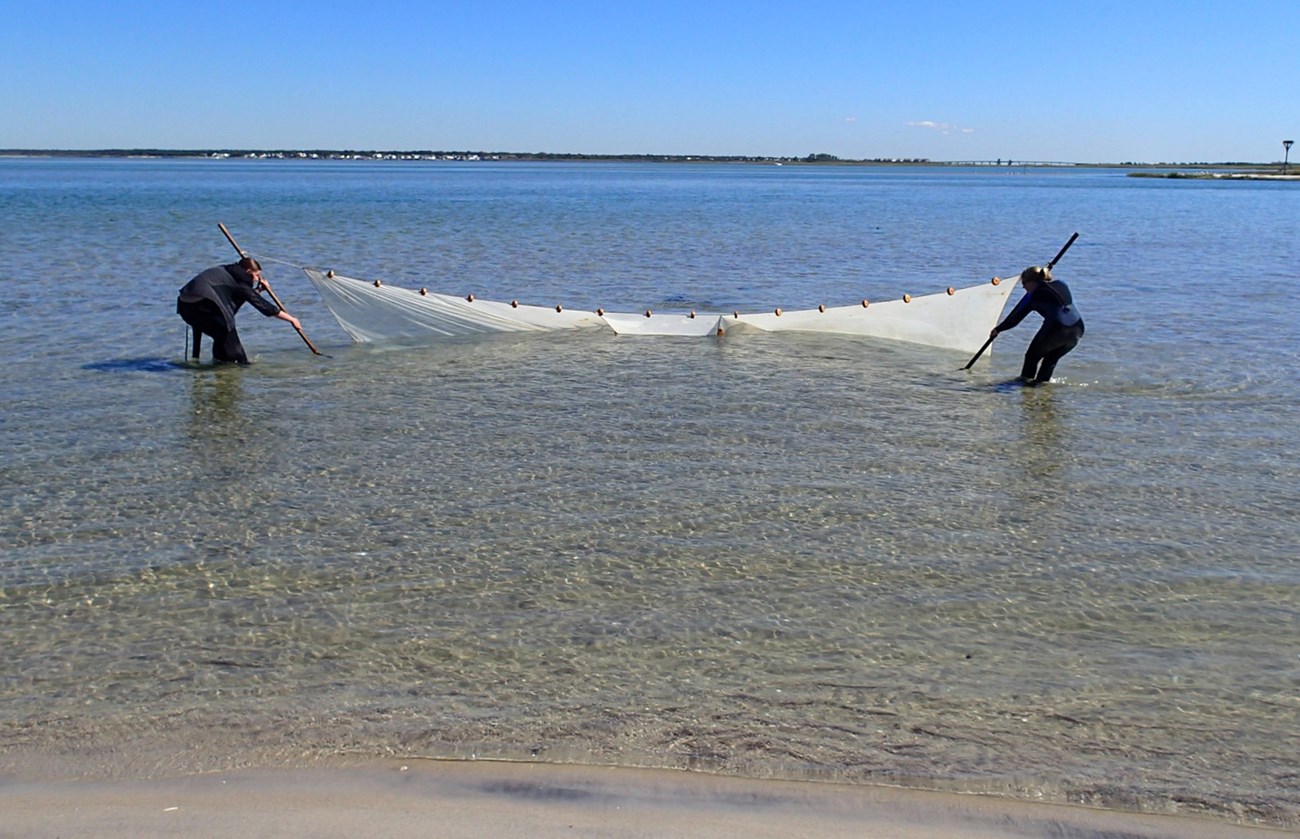
Brad Peterson
Still, a full recovery remains uncertain, Dr. Peterson cautions. Eelgrass communities are on a tightrope. Because pollution and brown tides continue to plague central parts of the bay, eelgrass is cornered into shallower areas near the breach, where water temperatures are likely to warm quickly in summer, creating a risky situation for the recovering eelgrass beds. Similarly, while hard clams show improved growth rates since they are feeding on higher-quality food resources that the breach introduced into the bay, the breach also delivered an abundance of lady crabs, which are potential hard clam predators. Other risks for hard clams include colder water temperatures, as well as increased salinity near the breach, which could promote a hard clam parasite called QPX (Quahog Parasite Unknown).
Dr. Peterson and his team continue to analyze data from the two post-Hurricane Sandy studies. Their findings will provide critical scientific information about key environmental and biological dimensions of an even larger, more complex ecological puzzle that will have consequences for Great South Bay and surrounding coastal communities for years to come. This work is meaningful, but like anything, it’s important to note that it has its limits. Gauging the potential for ecological resilience is a slippery affair. Ecosystems are complex. They’re subject to chance occurrences and constant change resulting from a variety of forces, from climate change to the demands of human cultures and economies. In some ways, perhaps our human understandings of ecologies need to shift in order to reveal possibilities for resilience.
Will Great South Bay ever be the same as before, when the water was clear, the eelgrass beds lush, and the shellfish industry thriving? “It’s a changed system,” Dr. Peterson says. And anyway, nobody can answer that question with certainty. But that doesn’t mean that the Great South Bay ecosystem is not resilient. With time, and with careful monitoring to track ecological change, we can learn its potential.
Written by Jamie Remillard & Caroline Gottschalk Druschke (SEAcomm URI)
Visit the Northeast Coastal and Barrier Network's website to learn more about monitoring seagrass and estuarine nutrient enrichment!
